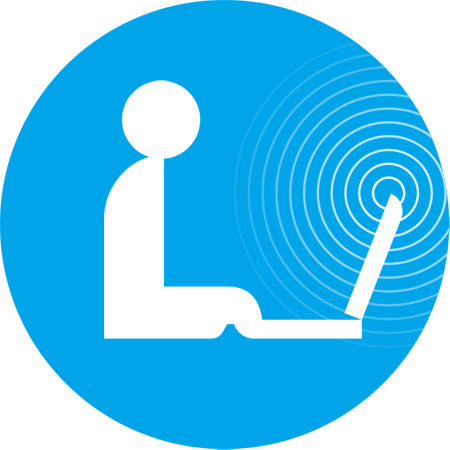In a library, particularly public, “technology services” can
be a bit nebulous to define. First off, what do we consider “technology,” and
what role does it have in library services? You may officially have a shiny
title such as “Technology Services,” “Systems,” or just be the reference librarian
who’s better with technology. There are lots of things that can fall within
this scope; I’ve found that if it even involves computers tangentially, I’ll be
pulled in. Also, whatever that brand new tech thing is – expect questions about
it. You are now the “expert” on it. If you’re new to this, or even if you’re
not, I want to share a few things I’ve learned.
Areas of Expertise:
- The Reference Interview
- Teaching
- Research
- eBooks & Digital Content
- Creation of Web Content
- Emerging Technology
This is by no means exclusive or exhaustive, but more a
touchstone. These are the everyday inquiries and issues that will likely arise
when working in a library, even if you’re not the go-to techie. It is rare to
visit a library without public computers, and circulating e-readers are almost
common.
 |
| source |
It’s been mentioned on
this blog before, but it bears repeating: Don’t worry about knowing the
answer to everything. Knowing how to find the correct answer is often just as
important as knowing the correct answer. This is a big part of assisting
patrons in research and with working on computers. Remember the “Reference
Interview” from library school? This becomes the techie’s friend. It is a great
tool for taking an original request for help and parsing it to figure out what
the actual request is. Learn to explore, look for patterns, and sometimes go
ahead and accept that you might mess up.
I had to learn to expect surprises and panicked reports of
something gone wrong. You’ll also want to learn how staff and patrons talk
about technology so that you can understand what they’re really saying and so
you can help them better understand and communicate about technology. Plan for
the weird and unusual; patrons will find unique and creative ways around policy
restrictions.
Settling In:
- What have you inherited?
- How are patrons using technology?
- How is the library using technology?
- How can needs be better met?
- What resources do you have?
Before going forwards you need to know where you are. There
may be an IT department, a distribution of key responsibilities across staff,
or there may just be you. Learn the set-up, including administrator accounts,
and start from there. Dig up documentation if it exists, build documentation if
it doesn’t already exist.
Why are your patrons coming in to use the library's
technology offerings? Maybe they just want to play games on Facebook, or take
an online class, or maybe graphic design and photo editing. Are those demands
being met? Are there areas that patrons regularly need help that could be met
by classes? How can you help increase digital literacy in the library and
community? This is important for the now and for future planning. Do patrons
bemoan the lack of certain digital resources that your library actually has? EBooks,
for one come to mind. We all know that libraries have great resources, but we need
to make sure that the resources we offer have both demand and awareness.
Both as part of settling in and as part of forward thinking,
you should always be thinking about how to better meet community needs. Think
small and think big. Learn what your resources are. What could the library
offer? Maybe patrons what to edit images but Photoshop is too expensive for
your library, so explore open source alternatives like GIMP. How can you upgrade or
replace aging and malfunctioning computers within your budget? Would a low-cost
option like a Raspberry Pi
work for replacing sluggish Public Access Catalog stations? Learn about the
historical funding sources for technology in the library (Friends of the
Library, Kiwanis, grants?), meet the people involved, and search for new
possibilities.
 |
| source |
Going Forward:
- Reach out to community groups
- Keeping in-house technology up-to-date and in working order
- Computer skills classes & workshops
- Monitor emerging trends
- Be a resource
- Plan for the future
- Take things one step at a time
Your focus should be on the library as a resource for the community,
whether you actively work with patrons or support from behind the scenes. The
technology services that libraries offer are immensely important to many
library users across communities of every size. Reaching out to the needs of
current users and potential users is part of your role as a Technology Services
Librarian. Even if you’re not the final authority in the direction the library
takes its technology services, chances are you will be involved in the
planning. Stay informed about trends and innovations allows you to better
support the library and meet patron demand.
No matter what, remember to take things one step at a time. Some
days you will come into work with plans, you are going to get things done, and
immediately are greeted with a panicked “_____ isn’t working!” and things
cascade from there. Don’t Panic.
Take a deep breath and work through it one piece at a time, doing triage as
necessary to determine what needs fixing RIGHT NOW verses what can wait, and
reassure people that you are on the job.
By your skills set, you are a resource. Your purpose in the
library is to support staff and public.
Tegan Mannino is a librarian and geek from Western MA. She spends far too much time reading and on the internet. Her book reviews and (mis)adventures can be found at her blog, Libromancer's Apprentice.


No comments:
Post a Comment